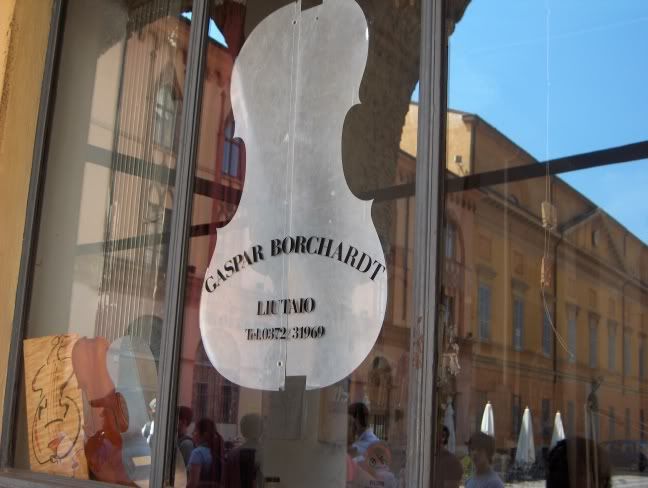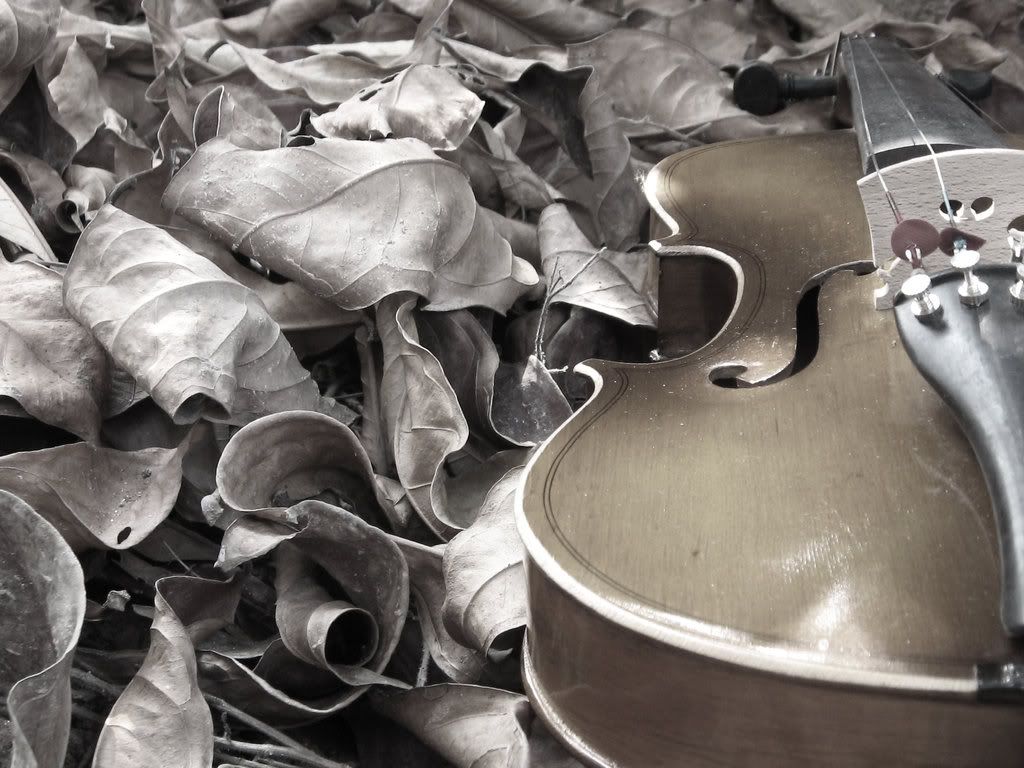[Crermona]
The most famous violin makers (luthiers) between the 16th century and the 18th century include:
The school of Cremona, beginning in the half of the 16th century with violas and violone and in the field of violin in the second half of the 16th century
The Amati family, active 1550–1740 in Cremona
The Guarneri family, active 1626–1744 in Cremona and Venice
The Stradivari family, active 1644–1737 in Cremona
************
The violin immediately became very popular, both among street musicians and the nobility, illustrated by the fact that the French king Charles IX ordered Andrea Amati to construct 24 violins for him in 1560. One of these instruments, now called the Charles IX, is the oldest surviving violin.
************
 |
| Violin shop in Cremona |
[Violin]
Since their invention, instruments in the violin family have seen a number of changes. The overall pattern for the instrument was set in the 17th century by luthiers like the prolific Amati family, Jakob Stainer of the Tyrol, and Antonio Stradivari, with many makers at the time and since following their templates.
************
The earliest evidence for their existence is in paintings by Gaudenzio Ferrari from the 1530s, though Ferrari's instruments had only three strings.
************
 It is not clear exactly who made these first violins, but there is good evidence that they originate from northern Italy, in the vicinity (and at the time the political orbit) of Milan. Not only are Ferrari's paintings in this area, but at the time towns like Brescia and Cremona had a great reputation for the craftsmanship of stringed instruments. The earliest documentary evidence for a violin is in the records of the treasury of Savoy, which paid for "trompettes et vyollons de Verceil", that is to say, "trumpets and violins from Vercelli", the town where Ferrari painted his Madonna of the Orange Tree. The first remaining written use of the Italian term violino occurs in 1538, who brought "violini Milanese" (Milanese violinists) to Nice when negotiating the conclusion of a war.
It is not clear exactly who made these first violins, but there is good evidence that they originate from northern Italy, in the vicinity (and at the time the political orbit) of Milan. Not only are Ferrari's paintings in this area, but at the time towns like Brescia and Cremona had a great reputation for the craftsmanship of stringed instruments. The earliest documentary evidence for a violin is in the records of the treasury of Savoy, which paid for "trompettes et vyollons de Verceil", that is to say, "trumpets and violins from Vercelli", the town where Ferrari painted his Madonna of the Orange Tree. The first remaining written use of the Italian term violino occurs in 1538, who brought "violini Milanese" (Milanese violinists) to Nice when negotiating the conclusion of a war.The oldest confirmed surviving violin, dated inside, is the "Charles IX" by Andrea Amati, made in Cremona in 1564, but the label is very doubtful. The Metropolitan Museum of Art has an Amati violin that may be even older, possibly dating to 1558 but just like the Charles IX the date is unconfirmed. One of the most famous and certainly the most pristine is the Messiah Stradivarius (also known as the 'Salabue') made by Antonio Stradivari in 1716 and very little played, perhaps almost never and in an as new state. It is now located in the Ashmolean Museum of Oxford.
Early makers
Instruments of approximately 300 years of age, especially those made by Stradivari and Guarneri del Gesù, are the most sought after instruments (for both collectors and performers). In addition to the skill and reputation of the maker, an instrument's age can also influence both price and quality.
The most famous violin makers, between the early 16th century and the 18th century included:
Amati family of Italian violin makers, Andrea Amati (1500–1577), Antonio Amati (1540–1607), Hieronymous Amati I (1561–1630), Nicolo Amati (1596–1684), Hieronymous Amati II (1649–1740)
Guarneri family of Italian violin makers, Andrea Guarneri (1626–1698), Pietro of Mantua (1655–1720), Giuseppe Giovanni Battista Guarneri (Joseph filius Andreae) (1666–1739), Pietro Guarneri (of Venice) (1695–1762), and Giuseppe Guarneri (del Gesu) (1698–1744)
Antonio Stradivari (1644–1737) of Cremona
[History of the violin]
.


No comments:
Post a Comment